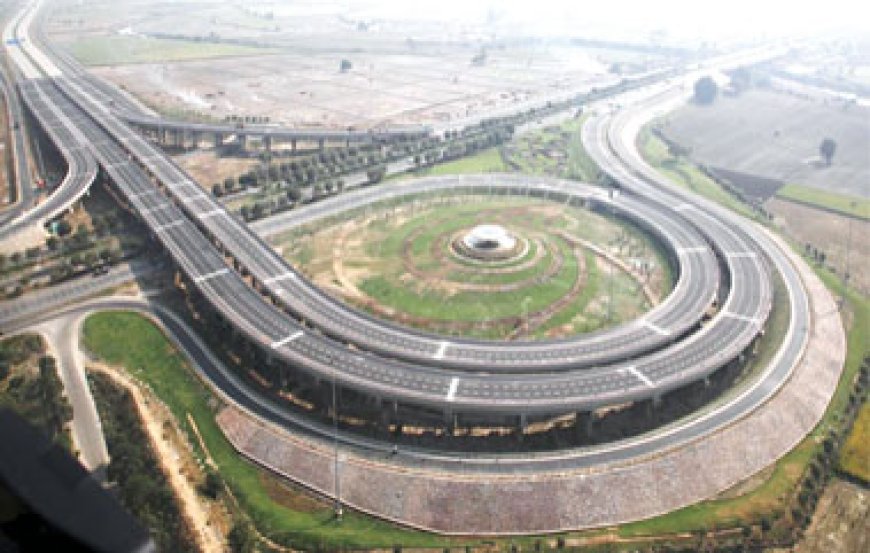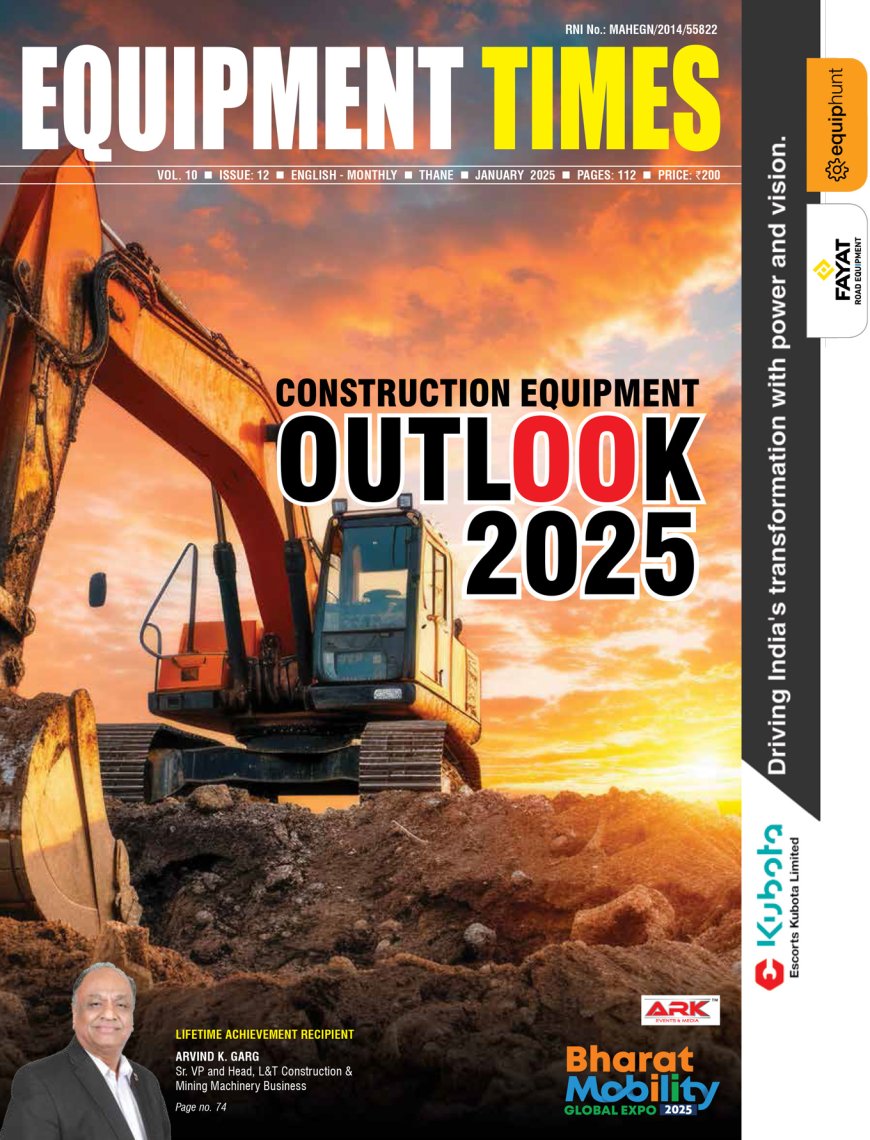Re-scripting the Growth Story
Will the never-before biggest highway project and huge capital infusion for public sector banks script a new growth story? Agith G Antony knits together the voice of the industry captains. Transitional effects of demonetisation and GST are over,’ states Arun

Will the never-before biggest highway project and huge capital infusion for public sector banks script a new growth story? Agith G Antony knits together the voice of the industry captains.
Transitional effects of demonetisation and GST are over,’ states Arun Jaitley. The temporary economic slowdown was ‘bottoming out’ declares the Economic Affairs Secretary, Subhash Garg. Both these comments came on the wake of the announcement of the stimulus package approved by the Cabinet to boost the flagging economic growth, create jobs and increase credit flow – a massive road infrastructure investment of nearly Rs 7 lakh crores over the next five years, and recapitalisation plan for state-run banks to the tune of Rs 2.11 lakh crores. What is the impact of the twin initiatives on the sagging economy? Will the stimulus package trigger the growth momentum and able to sustain quality growth? What about the executing capability of agencies involved? Questions abound.
The Project
The country’s ever-biggest highway construction project to expand and build 83,877 km with an investment
Rs. 6.9 lakh crore includes the ambitious Bharatmala programme covering 34,000 km for Rs.5.34 lakh crore. The Rs 5.35 lakh km project will include 9,000 km of economic corridors to unlock full economic potential, 6,000 km of inter-corridor and feeder routes, 5,000 km of national corridors efficiency improvement, 2,000 km of border road connectivity, 800 km of expressways and 10,000 km of balance NHDP projects.
Industry Voice
The announcement of the stimulus package couldn’t have come at a more opportune time, feels the industry. Taking a holistic approach DK Vyas, CEO, Srei Equipment Finance paints the pangs of the passing times and how important the economic stimulus announced by the government in rekindling the hopes of various stakeholders. ”In the first quarter of the current fiscal, the real GDP growth slid to 5.7% from 7.9% in the same period last fiscal. The demonetisation effect, although waning, and destocking in the run up to GST resulted in sharp slowdown in manufacturing growth, deceleration in exports and moderation of consumption growth. Industrial growth in the first quarter slowed to 1.6%. This was also reflected in the corporate earnings of listed entities which remained muted in the first quarter. The effectiveness of monetary policy in stimulating economic growth also seemed to be dwindling with slowdown in credit growth. It was thus imperative that the government provide some economic stimulus to induce growth,” states Vyas.
According to him infrastructure investment such as roads has a huge multiplier effect as it raises the economy’s productive capacity by improving the supply-side efficiencies. The mega road projects worth Rs 6.92 lakh crores will provide a much needed shot in the arm, in conjunction with the recapitalisation initiative to improve health of banks, as infrastructure accounts for about one-third of the outstanding bank credit to industry.
Says Anand Sundaresan, Vice Chairman and Managing Director, Schwing Stetter India, “At a time when the sentiments are a little pessimistic, the announcement by the FM on mega road projects and recapitalisation of banks for funding infra projects is very timely. The construction equipment manufacturers can look forward to huge business prospects ahead. These projects, if implemented as planned, will bring in substantial overall growth across all sectors.” However, he points out the Herculean task of skilling. “We are extremely lagging on availability of skilled labour and managerial band width. So there should be sufficient focus also given for skill development and project management training.”
“Both announcements will help in spurring construction and economic activity in the country. These along with other ongoing schemes will boost the sales of construction equipment in the country,” says Samir Bansal, Manager-India, Off-Highway Research. According to him these announcements are backed with timelines and details on how they will be funded. This gives them much credibility and assures of implementation, although some amount of delays in execution cannot be ruled out. Larger outlay for road sector, which is currently the growth driver for construction equipment, will help in the sustaining the growth momentum during the next few years.”
“The demand for construction equipment (CE) continues to grow mainly due to the increase in infrastructure spend, the sector is likely to grow by 13-17% during 2017. The industry growth this year has been somewhat curtailed despite strong growth during January-February 2017 as the markets were temporarily hit by emission related ambiguity and GST during April and July 2017, respectively. It is expected that the sector’s growth to lower in 2018 with it growing by 8-10%. For 2019, industry growth may slow down to around 4% due to Union elections and high base effects. However, infrastructure investments like this in roads, irrigation, railways and metro will drive demand, states Rajesh Nath, Managing Director, VDMA India.
“Any stimulus, if well directed, will certainly have a positive impact on the economy. Essentially, the huge capital infusion into public sector banks is welcome to increase lending,” avers Amarnath Ramachandran, President and Director, LeeBoy India. He minces no words when it comes to the implementation part. “In the past, however, lending from PSBs has not reached the entrepreneurs. If the new norms are monitored properly, the economy will boom, or you will have a fresh set of defaulters booking their tickets to London.” Ramachandran also points out the challenge of building capabilities. He says, “The infrastructure boost is very interesting. The challenge for the ministry will be to find contractors to execute at the pace desired by them. Most of the large companies are PPP averse and are inclined towards EPC as a first preference and HAM as a second preference.”
Sharwan Agnihotri, Head – Marketing & Business Development, Hyundai Construction Equipment India supports the view. “This is a welcome move from the government of India as the finance availability for infrastructure projects is a key bottleneck. Though the banks would be ready for lending after the recapitalization package, a long term solution for financing infrastructure projects is required. Time bound execution of the projects would help long term investors to assess the risks and gains and align the investment and project tenure. This would free the cash for procurement of technologically superior machines and other materials for ensuring that the infrastructure thus built is of good quality and durability,”
However, speaking on the timelines Agnihotri says, “Such big announcement should be followed with project timelines to give confidence to domestic and foreign investors and contractors to plan for funds and required equipment. The delays caused by various clearance requirements and legal issues lead to cost escalation and uncertainty over project viability. Time bound execution would instil the confidence among domestic and foreign investors which would improve much desired FDI flow in infrastructure sector.”
According to Nath a big private consumption push was needed to get investment demand going. That could well come from the big infrastructure push, which will boost demand not just in sectors like steel, cement and other industries involved in roads construction but also consumer goods. The consumer goods demand is also going to get pushed by increased employment. The section at the bottom of the pyramid – could see employment opportunities opening up due to the construction boom, even with high levels of mechanisation in road construction projects. The finance ministry expects 14.2 crore mandays of jobs to be generated by the road programme. Employment could also get a boost because; the recapitalisation programme could see increased lending to small-scale units under the MUDRA scheme. The MSME sector is the biggest employment generator in the Indian economy.”
“The demand for CE grew by over 35 % during 2016, overcoming four consecutive years of weak demand, giving a boost to the sector which is likely to grow by 13-17% in 2017. The sector outlook is improving given the 20% plus growth witnessed in the construction equipment industry during Q1 of 2017 mainly due to higher infrastructure spend, particularly in roads, raised equipment utilisation and subsequently demand for new equipment which led to a sharp reduction in the delinquency data for CE financiers. It is expected that due to this big infrastructure push, the demand for CE will boost further in the years to come,” says Nath.
Impact on FDI flow
Of the support to banks, a sum of Rs 1.35 lakh crore will be raised through recapitalisation bonds and the rest through budgetary support as well as market borrowings. Under the road connectivity programme at a cost of nearly Rs 7 lakh crore, the government will construct 84,000 km highways in the next 5 years. Of this, the Bharatmala project component will involve an outlay Rs 5.35 lakh crore. Funding for the programme will be raised as debt from the market (Rs 2.09 lakh crore), private investments through PPP (Rs 1.06 lakh crore) and from accruals to the central road fund and toll collections (Rs 2.19 lakh crore).
Says Nath, “According to Department of Industrial Policy and Promotion (DIPP), the total FDI investments India received during April 2016-March 2017 rose 8 per cent year-on-year to US$ 60.08 billion, indicating that government’s effort to improve ease of doing business and relaxation in FDI norms is yielding results.” He adds, “The government is also framing a new industrial policy with an aim to create jobs for the next two decades, promote foreign technology transfer and attract $100 billion FDI annually. The policy is expected to be released in October this year. This policy envisages setting up six thematic focus groups. These six thematic areas are ‘Manufacturing and MSME’, ‘Technology and Innovation’, ‘Ease of Doing Business’, ‘Infrastructure, Investment, Trade and Fiscal Policy’, and ‘Skills and Employability for the Future’.
According to Bansal government’ plans for funding of road projects include private investment of Rs1.06 trillion. Further private investment is planned through Toll-Operate-Transfer (TOT) model, much of which is expected as FDI. On the other hand, recapitalisation would help the banks in cleaning their books and meet the RBI prescribed norms for Capital Adequacy Ratio (CAR), which would enable them lend more and spur private investment.
“The bank recapitalisation plan is unprecedented. As the banks had stopped lending for they were labouring under the NPA burden. Now, they will get money to restructure the bad loans as well as lend to projects, something the economy sorely needs at this point of time,” avers Vyas. According to him the Rs. 2.11 lakh crores recapitalisation package will go a long way in improving the flagging health of banks which are capital starved to meet the Based III requirements, and saddled with non-performing assets at the same time. As per a report by CRISIL, PSBs need Rs 1.4 – 1.7 lakh crore additional capital to meet Basel III requirements by March 31, 2019. So, the package seems adequate. The recapitalisation will help the banks clean up their balance sheets and stimulate a much needed credit growth.
Vyas elaborates further, “Investment in infrastructure has a snowball effect on the other core sectors like cement and steel. It has a proven effect on increasing private investment and creating employment. There is a latent demand build-up in the economy as a result of the demonetization drive. The lag effect of infrastructure creation along with an improved lending appetite of banks can go a long way in reviving private capital formation in the economy. Healthy capital formation, both public and private, will ensure that India retains the tag of the fastest-growing-major-economy – a major attraction for FDI inflows.”
However, Ramachandran pegs to differ. “Private investments, FDI flow in this sector is unlikely to increase in the near future as overseas investors are far from comfortable in directly executing projects in India. Lethargic judicial systems, lack of means of recovering debt are deterrents,” points out Ramachandran.
Implementation, the Key
It is true that the devil lies in the details. The implementation details and the funding support for the road projects are yet to be revealed. Details of the recapitalisation bonds are yet to be announced. For these initiatives to materialise, there needs to be a clear roadmap and a will to change, including much needed banking reforms to improve governance. That said, there has been a marked improvement in the pace of project awarding and execution in the recent past. What is heartening is the intention of the government in pursuit of growth and employment, according to Vyas.
Says Nath, “The government’s action on the twin initiatives will be important to watch. It will be interesting to see whether the next year’s budget actually step up outlays on roads, on the lines of what was announced. More importantly, do the implementing agencies – the National Highways Authority of India, National Highways and Infrastructure Development Corporation, Ministry of Road Transport and Highways and state Public Works Departments – have the capacity to undertake such massive projects.” He adds, “Apparently the government is planning substantial delegation of powers to ensure this. Giving out projects as public-private partnerships (PPPs) may help. The government must give out large engineering procurement and construction (EPC) contracts to private construction firms. This can be done for at least the projects which may not be financially attractive to the private sector. A range of financing options – ToT, hybrid annuity, build-operate-transfer etc – could be used to get private investment in other projects with high traffic volume.
Ramachandran had this to say. “Funds are available but the financial health of the companies executing projects is not very good. Also, overstretching and executing too many projects simultaneously have led to a paucity of large ticket project managers and staff down to operator level.”
Says Bansal, “From announcements to actual materialization on ground would be one to two years. Evaluation of the project, tendering awards, project planning to actual procurement of machines takes time. There is, however, enough existing work to keep the industry going. It will be a long, hard grind without any overnight magic.” He adds, there might be a lag for a few months, but corporate credit growth momentum should pick up from the beginning of next financial year.
Moving Forward
The Construction Equipment (CE) segment has already been riding a massive infrastructure push by the government. The CE market grew by 30-35 per cent in 2016-17 (unit sales) and further by around 15% in the first half of this fiscal. Roads are CE intensive which forms around 15-20% of the project cost. The new announcement will ensure that the unprecedented growth in CE witnessed in the past continues and over the next few years we should see the sales of equipment sector maintaining a growth of 20% to 25% CAGR. Despite anticipated challenges the never-before biggest highway project and huge capital infusion for public sector banks seems to script a new growth story.
Hits: 30










